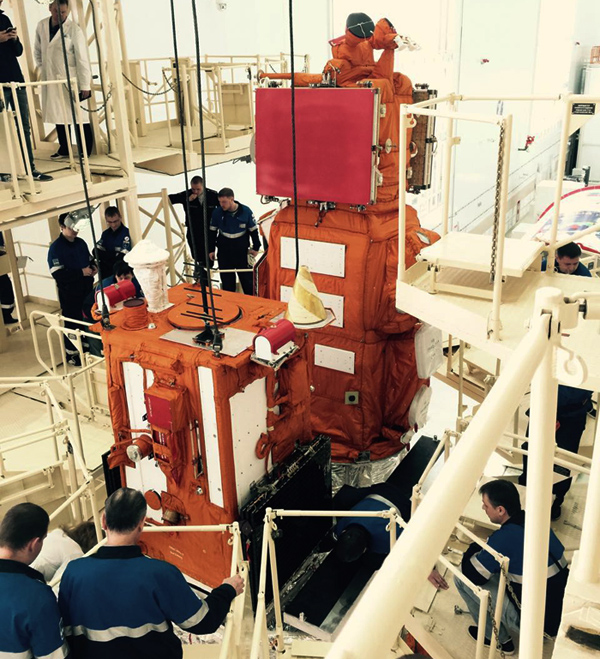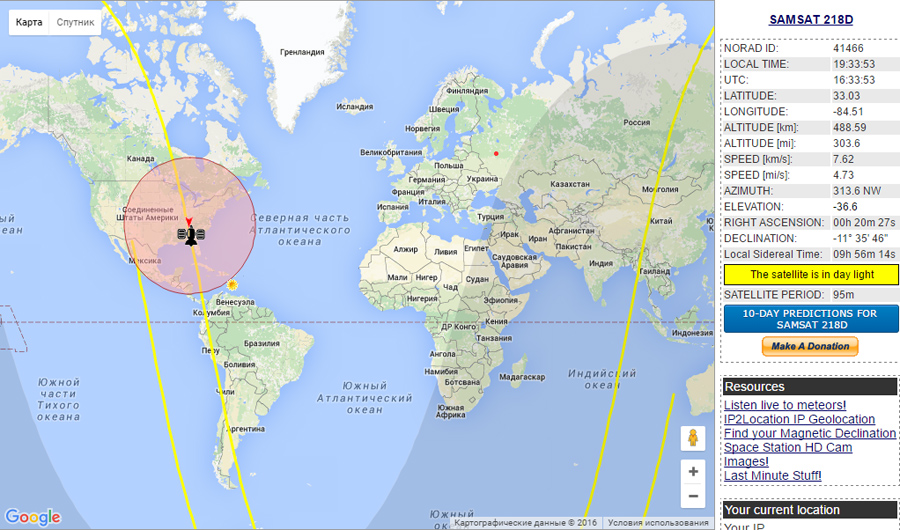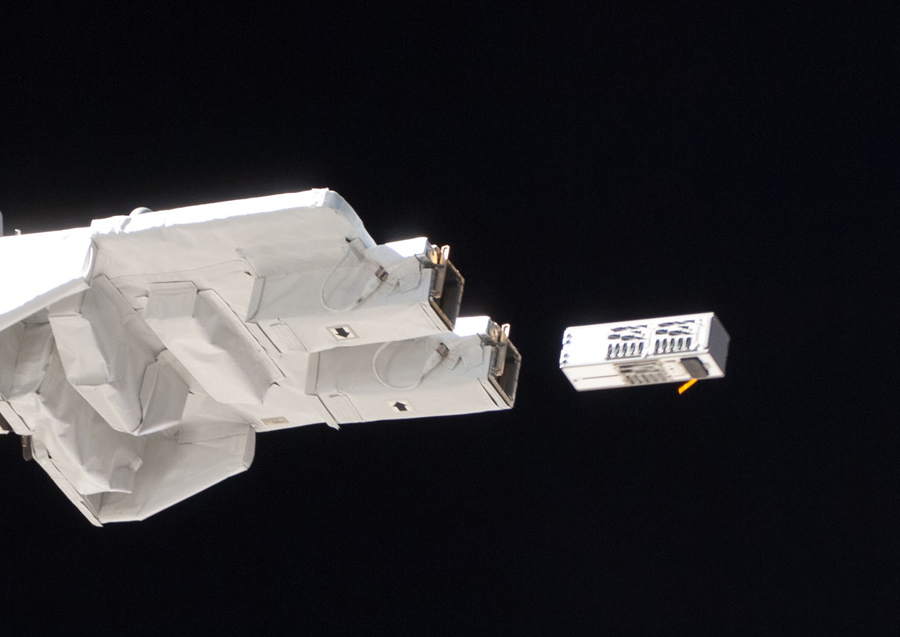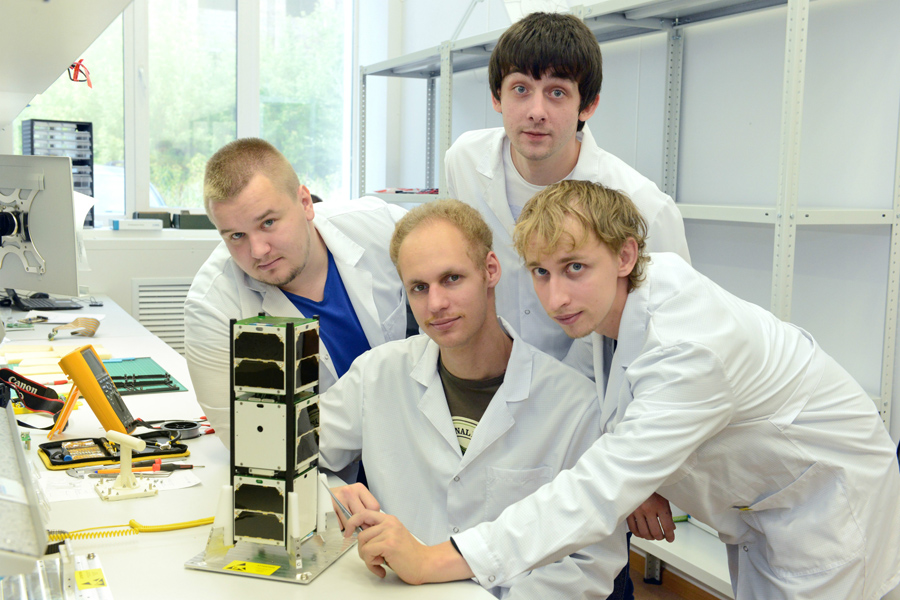Hear SamSat-218D

On April 28, 2016, the beautiful snow-white Soyuz-2.1a rocket went to space from the new Russian Vostochny cosmodrome. On board the rocket, three satellites set off into orbit: two “adults” scientific apparatus “Lomonosov”, the satellite remote sensing satellite “Stork-2D”, and one small - student apparatus SamSat-218D. After separation from the upper stage, the first two got in touch and work began with them, but the SamSat-218D satellite could not be heard.

SamSat-218D - the development of the Samara State University, was created by students and graduate students of the university. The basis was taken by the international standard CubeSat , which allowed the use of universal launch containers for placement on the rocket and separation from it. The electronic filling was used experimental, never flying into space before. Printed circuit boards of the onboard computing complex, radio transmitter, orientation and stabilization systems were developed at SSAU, and were manufactured at Novosibirsk State University.
')

The test task of the satellite is to show the efficiency of the entire system, to test their proprietary communication system with the satellite "by telephone". As an additional payload placed the system of passive aerodynamic stabilization. SamSat-218D is designed according to the principle of the shuttlecock - a heavy electronics unit on one side and a light plastic tail on the other.

In theory, a fairly light satellite can be tried to stabilize using the resistance of the residual atmosphere in orbit.
While some bloggers talked about telemetry with SamSat-218D, experts did not sleep at night waiting for the first communication sessions and attempts to hear the real signals of the satellite. By default, it does not transmit telemetry — that is, data on its state — in the beacon mode, it only transmits a Morse code "SamSat218D" every 30 seconds. And this creators tried to hear its creators through atmospheric noise.
But in vain! More precisely, some signals came, but very abrupt, which could not be accurately interpreted.
The satellite flies in polar orbit, during the day it flies over the whole world, so any radio amateur can try to hear it. The developers of the satellite did not advertise the problems until the radio amateur Dmitry Pashkov from Mordovia wrote about his unsuccessful attempts to receive SamSat-218D signals. Then from Samara came a confirmation of the problems with the device, and at the same time a request to all radio amateurs of the world:
Message from the team of developers of the SamSat-218 satellite of the interuniversity space research department of the SSAU
" To all radio amateurs who can receive signals from satellites in the UHF band (144 MHz).
On April 28, the SamSat-218D satellite, created by Samara State Aerospace University, was launched during the first launch from the Vostochny space center.
The satellite has a radio beacon that transmits every 150 seconds (or 30 seconds) the word "SamSat-218D" for 15 seconds at a frequency of 145.870 MHz. Transmission is carried out by Morse code in CW mode. During the passage of the satellite over our receiving station, we hear fragmentary Morse code on the background of noise, but we are not sure of the degree of its reliability.
We are asking to listen to the air on the above frequency, record the audio signal and send it to teomant@bk.ru. For all questions related to the reception, we are ready to provide additional information, if necessary. Processing a large amount of data will allow us to understand the nature of the problem (perhaps the satellite is strongly twisted when leaving the transport and launch container) and try to estimate the speed
rotation "
We are grateful in advance, the team of developers of the satellite of the inter-university space research department of the SSAU .
Satellite movement can be tracked at n2yo.com .

If any signals from the device still go , it means that it is efficient and there is a chance to correct the situation. Most likely, it spun too quickly during separation, so there were problems with data transmission, it is still possible that it did not open the antenna, which could also worsen the connection. While it is hoped that, under the influence of aerodynamics and other factors, the rotation will slow down. Just wait for this will take several weeks or even months.
The satellite has an active orientation system - magnetic coils. They allow you to focus the device "based on" the magnetic field of the Earth. More precisely could allow, if everything went well. While it is not possible to conduct the first communication sessions, and to obtain data from the onboard systems, it will not be possible to transfer the command to parry the spin.
Regardless of whether the device turns on or not, developers will still have to resolve the issue of the reason why they are spun. The upper Volga block, which output all three satellites, is said to have worked perfectly. But SamSat-218D was located in an experimental transport and launch container , which was also developed in Samara at the Progress RCC. Has he coped with his task?

The manufacturer’s website states:
Considering that nanosatellites have limited energy capabilities, which determines the low efficiency of the means of stabilizing their angular motion, in the development of the container, great attention was paid to minimizing the perturbations of the angular velocity of the nanosatellite during separation. The technical solutions used made it possible to reduce the angular velocity of nanosatellites of 3U format after separation to a level not exceeding 10 degrees per second, which is confirmed by the results of experimental testing.
Those. containers were specially designed and tested to minimize the twist, but it turned out quite the opposite. Perhaps the shuttlecock played a cruel joke with the developers, because Is its balancing much different from the standard 3U device for which the container was prepared?

For example: pictures of transport-launch containers on the ISS.
But these are my conjectures, in reality everything could be different. Hopefully, the developers will publish a bug report later.

And I would like to touch on the last moment: information-psychological. Now the fate of this satellite is chewed on in the media, and many commentators take it as just another Roscosmos file that launched a rocket with pathos, but the satellite did not work.
In reality, Roskosmos has withdrawn from this news. The Roskosmos of a healthy person would say: "Yes, we know about the problem and try to help the Samarans with all available means," and our Roscosmos said : "The
I would like to repeat: the student satellite, its main goal: to get real practical experience in the development and operation of equipment in space. These guys are the future of our space program. Now they are deep in this experience. Yes, in some ways they were mistaken if the device did not fly as it should; Yes, they tried to hide it from the public, according to the old Soviet tradition. But they are still learning, so they should have the right to make mistakes. Let them try, let them be mistaken, let them be convinced in practice that space is difficult! For our part, we can either deploy our VHF antennas and tune the receivers to 145.870 MHz, or support morally: everything is fine, you guys already know what you did right and what is wrong, and if you have knowledge, the goal is achieved and the launch is successful .
Source: https://habr.com/ru/post/393843/
All Articles